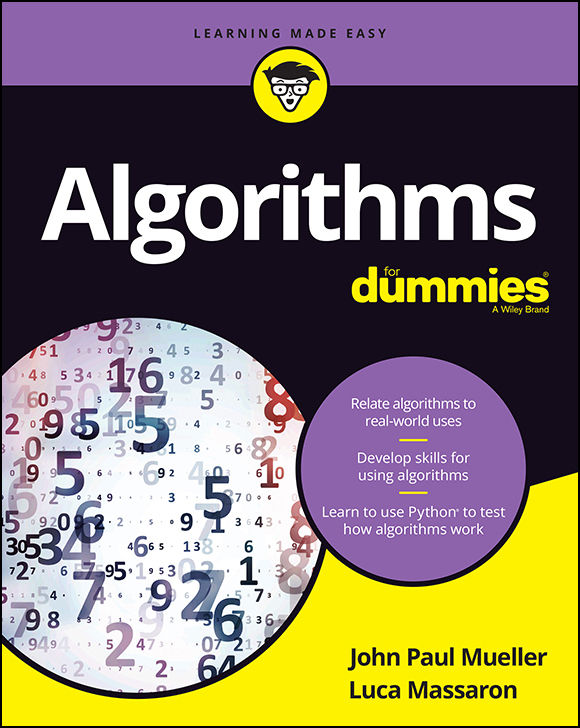Algorithms For Dummies (For Dummies (Computer/Tech)) by Mueller John Paul & Massaron Luca

Author:Mueller, John Paul & Massaron, Luca [Mueller, John Paul]
Language: eng
Format: epub
ISBN: 9781119330530
Publisher: Wiley
Published: 2017-04-10T16:00:00+00:00
Triads occur naturally in relationships, and many Internet social networks have leveraged this idea to accelerate the connections between participants. The density of connections is important for any kind of social network because a connected network can spread information and share content more easily. For instance, when LinkedIn, the professional social network ( https://www.linkedin.com/ ), decided to increase the connection density of its network, it started by looking for open triads and trying to close them by inviting people to connect. Closing triads is at the foundation of LinkedIn’s Connection Suggestion algorithm. You can discover more about how it works by reading the Quora’s answer at: https://www.quora.com/How-does-LinkedIns-People-You-May-Know-work .
The example in this section relies on the Zachary's Karate Club sample graph described at https://networkdata.ics.uci.edu/data.php?id=105 . It’s a small graph that lets you see how networks work without spending a lot of time loading a large dataset. Fortunately, this dataset appears as part of the networkx package introduced in Chapter 8 . The Zachary’s Karate Club network represents the friendship relationships between 34 members of a karate club from 1970 to 1972. Sociologist Wayne W. Zachary used it as a topic of study. He wrote a paper on it entitled “An Information Flow Model for Conflict and Fission in Small Groups.” The interesting fact about this graph and its paper is that in those years, a conflict arose in the club between one of the karate instructors (node number 0) and the president of the club (node number 33). By clustering the graph, you can almost perfectly predict the split of the club into two groups shortly after the occurrence.
Because this example also draws a graph showing the groups (so that you can visualize them easier), you also need to use the matplotlib package. The following code shows how to graph the nodes and edges of the dataset. (You can find this code in the A4D; 10; Social Networks.ipynb file on the Dummies site as part of the downloadable code; see the Introduction for details.)
import networkx as nx
import matplotlib.pyplot as plt
%matplotlib inline
Download
This site does not store any files on its server. We only index and link to content provided by other sites. Please contact the content providers to delete copyright contents if any and email us, we'll remove relevant links or contents immediately.
Deep Learning with Python by François Chollet(12875)
Hello! Python by Anthony Briggs(10124)
The Mikado Method by Ola Ellnestam Daniel Brolund(10013)
OCA Java SE 8 Programmer I Certification Guide by Mala Gupta(9980)
Dependency Injection in .NET by Mark Seemann(9518)
Algorithms of the Intelligent Web by Haralambos Marmanis;Dmitry Babenko(8522)
Grails in Action by Glen Smith Peter Ledbrook(7882)
Test-Driven iOS Development with Swift 4 by Dominik Hauser(7853)
The Well-Grounded Java Developer by Benjamin J. Evans Martijn Verburg(7771)
Becoming a Dynamics 365 Finance and Supply Chain Solution Architect by Brent Dawson(7760)
Microservices with Go by Alexander Shuiskov(7521)
Practical Design Patterns for Java Developers by Miroslav Wengner(7439)
Test Automation Engineering Handbook by Manikandan Sambamurthy(7382)
Angular Projects - Third Edition by Aristeidis Bampakos(6807)
Secrets of the JavaScript Ninja by John Resig Bear Bibeault(6641)
The Art of Crafting User Stories by The Art of Crafting User Stories(6298)
NetSuite for Consultants - Second Edition by Peter Ries(6239)
Demystifying Cryptography with OpenSSL 3.0 by Alexei Khlebnikov(6050)
Kotlin in Action by Dmitry Jemerov(5299)
